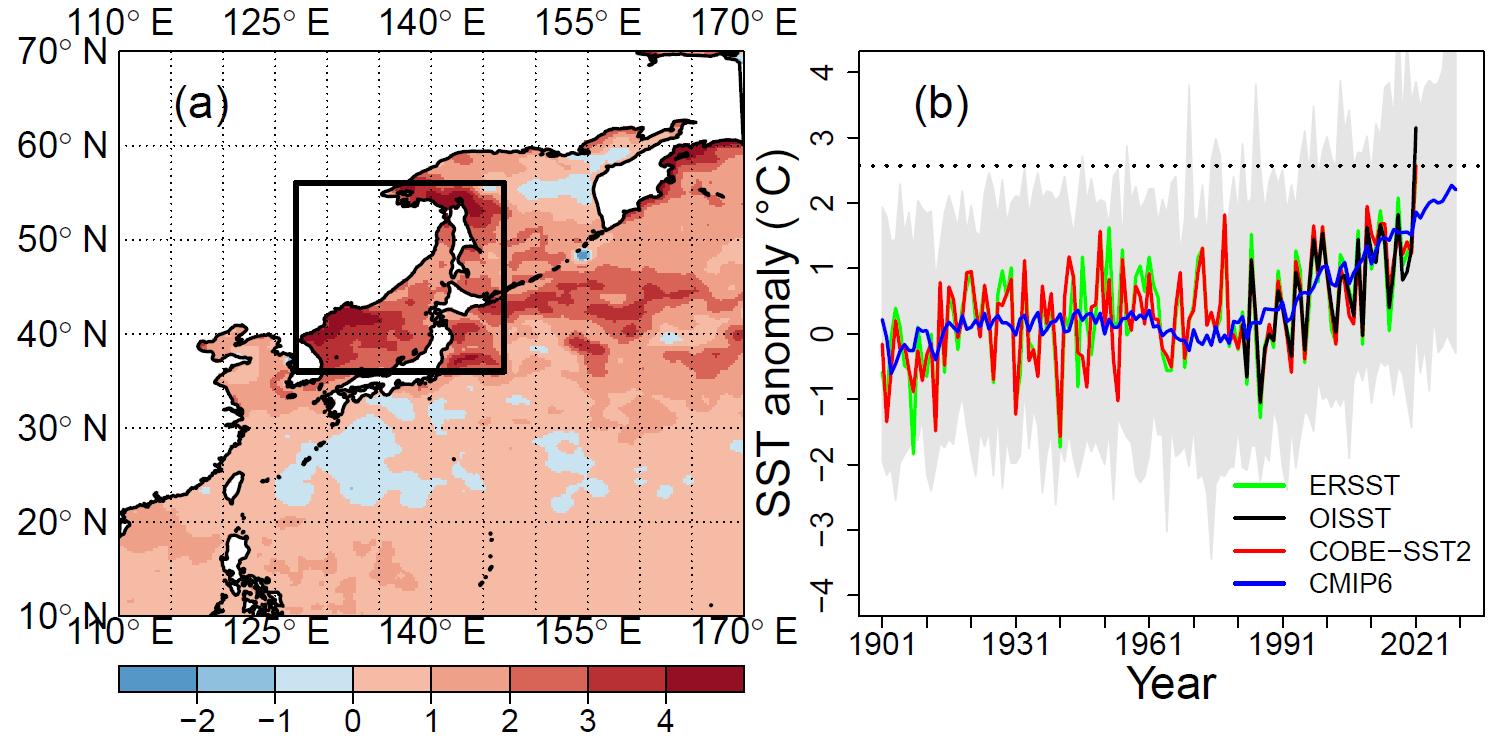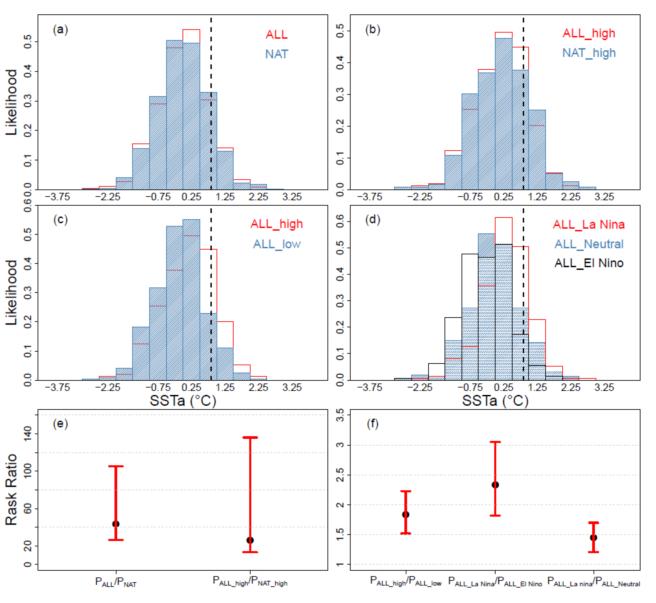Anthropogenic Warming Leads Record-breaking Northwest Pacific Marine Heatwave about 43 Times More Likely
Extreme event attribution can determine whether anthropogenic global warming made an event/type of event more likely and by how much. In the past years, studies have already connected global warming to changes in territorial extremes, however, few studies focus on the attribution of marine extreme events.
Recently, the research team led by Prof. YIN Baoshu from the Institute of Oceanology of the Chinese Academy of Sciences (IOCAS) attributed the record-breaking marine heatwave (MHW) event to global warming, atmospheric weather pattern, and El Nino Southern Oscillation (ENSO).
The study was published in Bulletin of the American Meteorological Society on Jan. 30.
In July 2021, an unprecedented MHW hit the northwest Pacific Ocean (NWP), featuring sea surface temperature anomalies (SSTa) larger than 4 °C in some coastal areas of the Japan (East) Sea and Okhotsk Sea. This event triggered an unprecedented widespread outbreak of harmful algae in the coastal waters, causing serious damage to the marine ecosystems and the coastal fisheries.
To estimate how human-caused climate change has influenced the likelihood of the MWH, the research team combines observations with climate models from the Coupled Model Intercomparison Project Phase 6 (CMIP6), which include historical all-forcing (natural plus all anthropogenic forcing) simulations and natural-only forcing simulations without the anthropogenic effects.
Attribution analysis reveals that human influence is estimated to have made such an event about 43 times more likely and to have the return period from more than two centuries in the counterfactual world to about five years in the present climate.
The experimental attribution analysis based on detrended SSTa reveals that the increased likelihood of this MHW is governed by the warming mean climate instead of climatic changes in SST variance. It is expected that with further ocean warming, there will be more and more frequent MHWs in the future.
"Natural weather patterns or climate variability may also play significant roles in the occurrence of this type of event," said Dr. LI Delei, first author of the study. "Our conditional attribution analysis revealed that the anticyclone atmospheric patterns and developing phase of La Nina favor the likelihood of such an event by a factor of about 2, which is weaker than the anthropogenic influence."
"Understanding the contribution of global warming to the occurrence probability or intensity of extreme events is important for communicating climate change and developing recovery and resilience plans," added Prof.YIN.
The study was supported by the National Key R&D Program, the National Natural Science Foundation of China, the Strategic Priority Research Program of the CAS, the Youth Innovation Promotion Association CAS, and the Taishan Scholars Program.

Fig. 1 (a) Observed temperature anomalies in July 2021 relative to the July mean of 1982-2011. (b) Time series of July SST anomalies averaged over the rectangle region in (a) from different observations and CMIP6 ensemble simulations.

Fig. 2 The impact of human-made climate change, atmospheric weather patterns, and ENSO on the likelihood of the MHW
Li, D., Chen, Y., Qi, J., Zhu, Y., Lu, C. & Yin, B. (2023). Attribution of the July 2021 Record-Breaking Northwest Pacific Marine Heatwave to Global Warming, Atmospheric Circulation, and ENSO. Bulletin of the American Meteorological Society, 104(1), pp.E291-E297.
(Text by LI Delei)
Media Contact:
ZHANG Yiyi
Institute of Oceanology
E-mail: zhangyiyi@qdio.ac.cn
(Editor: ZHANG Yiyi)